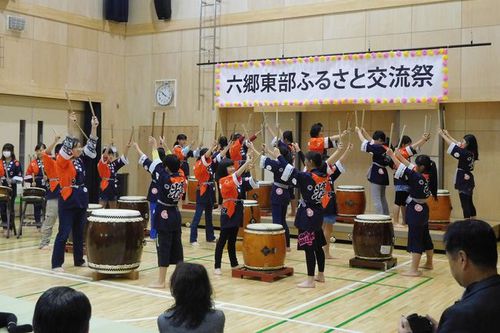July 24, 2018
Communal Ties Built from Culture and Heritage
Keywords: Civil Society / Local Issues Disaster Reconstruction Resilience

Copyright 2018 Sendai City All Rights Reserved.
Tohoku Fukko Nikki (Tohoku Reconstruction Diary), a weekly feature in the Tokyo Shimbun newspaper, delivers news and stories on reconstruction efforts in the communities devastated by the 2011 earthquake and tsunami. The articles are written by the JKSK Yui-Yui Project, an initiative to support survivors of the 2011 disaster. This time, we present below an article about local culture and heritage leading to communal ties between residents.
Wakabayashi-ku is the smallest ward in the city of Sendai, having an area of about 50 square kilometers and a population of about 136,000. More than half of the ward flooded when the earthquake and subsequent tsunami hit in March 2011. Over 300 precious lives were lost in the disaster and the area was severely damaged.
Wakabayashi-ku is also the area where Date Masamune, a prominent samurai warrior whose 450th anniversary of birth was celebrated in 2017, resided in his last days. The area had one of the richest natural environments in Sendai, the City of Trees, and was deeply steeped in tradition and history. Looking out over the coastal area now, however, the Fukanuma beach, once popular as the only swimming beach in Sendai, is empty and deserted, and only a trace of the once beautiful pine groves remains.
Prefabricated temporary houses for evacuees once numbered about 1,500 in the city, but by the end of 2016 had been dismantled and removed. New lives and communities are now being built in post-disaster public housing at 13 locations and at six disaster-preventative group relocation sites.
Things are not all going well though. Many people who evacuated from the cities and towns of Miyagi prefecture and Fukushima prefecture still live in private temporary housing. The earthquake struck instantaneously across a huge region, but the unevenness of the pace of restoration and reconstruction weighs heavily on people's minds. Even though people are successfully rebuilding their homes and livelihood, there is still a lot of emotional healing that needs to occur. Each disaster victim faces a different situation in the reconstruction process, and I am reminded again that the reconstruction process is tremendously long.
In the Rokugo-tobu district where reconstruction is underway, a Furusato Matsuri (literally, 'hometown festival') was held for the first time since the disaster. Kuroshio Taiko drumming, an instrumental performance of Japanese drums, had been a tradition at the now-closed Higashi-rokugo elementary school. This tradition is now carried on by the neighboring Rokugo elementary school, and the powerful performance by the students at the festival moved people to tears and smiles.
After the disaster, the word "kizuna," meaning communal ties, has drawn attention. A true kizuna is formed by people in the community. To do so, it may be necessary to review the power of culture and traditions inherited from the old days, such as festivals, Shinto dances and Taiko drums. I believe that an important mission of ours is to share with people the value of these important traditions.
Yurie Shirakawa
Mayor of Wakabayashi Ward, Sendai
Related
"JFS Newsletter"
- Aiming to Build New Communities in Earthquake-Stricken Areas: Ishinomaki Jichiren's Initiatives
- Investment to Help Disaster-affected Areas -- Initiative of Disaster Area Support Funds Initiative
- Disaster-Affected Ishinomaki -- Present Status (Part 2)
- Disaster-Affected Ishinomaki -- Present Status (Part 1)
- Tohoku and the World: 5 Years Since The Great East Japan Earthquake and Tsunami


